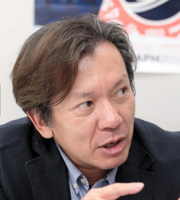経歴
-
2004年04月-継続中
早稲田大学 理工学術院 教授
-
2010年04月-2014年03月
NICT 音声言語コミュニケーション研究所 客員研究員
-
1999年04月-2010年03月
国際電気通信基礎技術研究所 客員研究員
-
2001年04月-2004年03月
成蹊大学 工学部 教授
-
1988年04月-2001年03月
成蹊大学 工学部 助教授
-
1994年07月-1995年08月
トロント大学 コンピュータサイエンス学部 Visiting Professor
-
1987年04月-1988年03月
成蹊大学 工学部 専任講師



Click to view the Scopus page. The data was downloaded from Scopus API in January 08, 2026, via http://api.elsevier.com and http://www.scopus.com .